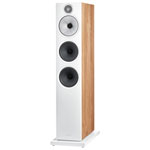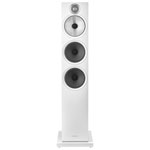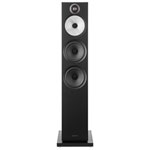Discover the Best Tower Speakers for Your Home Audio System
When it comes to enhancing your home audio experience, tower speakers stand out as a popular choice among audiophiles and home theater enthusiasts alike. Known for their impressive size and sound capabilities, these floorstanding speakers offer a range of benefits over other types of home speakers. Whether you're looking to fill a large room with rich sound or seeking a visually striking addition to your living space, tower speakers might be the perfect fit. Here’s an overview of how tower speakers differ from other home speakers and why they could be the ideal choice for your audio setup.
Advantages of Tower Speakers
- Full-Range Sound: Capable of delivering deep bass to high treble without the need for a separate subwoofer.
- Power and Volume: Designed to handle more power and produce higher volumes, making them suitable for larger rooms.
- Soundstage and Imaging: Offer a superior soundstage with a sense of depth and precise positioning of audio elements.
- Aesthetic and Presence: Serve as an aesthetic statement in a room, with various finishes and styles to complement home decor.
Why Choose Tower Speakers?
- Ideal for Larger Rooms: Their ability to project sound across larger spaces makes them a top choice for spacious areas.
- Preferred by Audiophiles: For those who prioritize high-quality sound, especially in music and home theater setups.
- Simplified Setup: Offers a comprehensive audio solution without the clutter of additional components like separate subwoofers.
- Visual Impact: They can enhance the visual appeal of your space, blending in or standing out as desired.
Considerations Before Choosing Tower Speakers
While tower speakers have their advantages, they might not be the best fit for everyone. They require more space and usually come with a higher price tag compared to smaller speakers. In smaller rooms or for casual listening, the benefits of tower speakers may not be as pronounced, potentially making bookshelf or satellite speakers a more practical option.
Deciding on tower speakers involves weighing factors such as room size, audio quality preferences, budget, and aesthetic desires. For those with ample space and a passion for superior sound, tower speakers offer a compelling choice. However, it's essential to consider your specific needs and room dynamics to ensure the best audio experience in your home.






